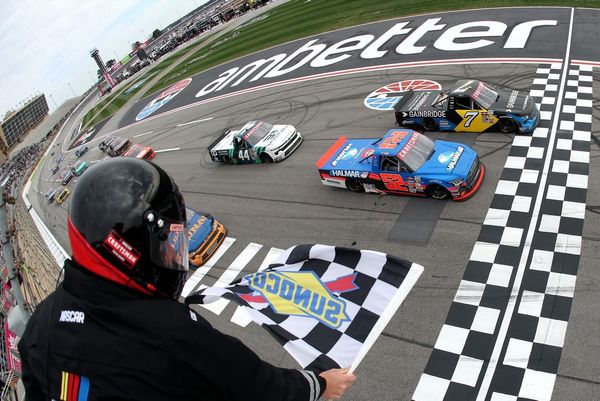
Elena Frolova from Getty Images; Canva
What Is a Credit Crunch in Simple Terms?
Simply put, a credit crunch is a time during which it is more difficult than usual to obtain a loan. The credit environment has tightened, which means that, for whatever reason, the amount of available credit has been reduced.
Banks are more reluctant to lend during a credit crunch, and when they do extend new credit, it is to only the most creditworthy customers—those who evidence the least amount of credit risk.
“Easy money” is the opposite of a credit crunch. When credit is loose, it’s easy for banks to offer loans to consumers and businesses because the interest they are being charged—as well as the interest they charge other banks—is low. The opposite happens during a credit crunch because monetary supply is limited, making banks less prone to take risks with their capital reserves.
Credit crunches often happen during bear markets, such as recessions, when many businesses are declaring insolvency or filing for bankruptcy. Banks and other financial institutions don’t make as many loans at this time simply because they don’t want customers to default.
In a May, 1991 Working Paper from the Federal Reserve Bank of Richmond, the Fed analyzed responses from qualitative surveys it had conducted with senior loan officers at commercial banks every quarter between 1967 and 1991.
Although questions had been refined through the years, overall, the survey asked the officers to indicate how willing their bank was to make consumer loans at the present time versus during the previous three months.
Its findings showed that “changes in [banks’] willingness to lend and changes in net credit standards generally move together … that is, when banks are less willing to lend, they tighten credit standards.”
Just as the businesses cycle moves through its four stages—expansion, peak, contraction, and trough—economies experience cycles, too. The Fed survey also revealed that during periods of expansion in the economic cycle, credit standards loosen, while banks are less willing to lend and have firmer creditworthiness standards during periods of contraction.
What Causes a Credit Crunch?
When there’s a credit crunch, you could say that the “party’s over.” The outcome is nearly always negative, although its causes could stem from a variety of factors:
- Speculation during an “easy money” period means traders took big risks for equally big rewards. But if their bets failed to pan out, the result is billions worth of bad debts, as could be seen when collateralized mortgage obligations imploded during the Financial Crisis of 2007–2008.
- An asset bubble that took years to develop could suddenly burst. This was apparent through the dot-com bubble of the late 1990s, when just about everyone was investing in tech-related IPOs—often with little proof to offer for their sky-high valuations. Rising interest rates and a recession in Japan helped pop the bubble in the early 2000s.
- The Federal Reserve could take an action that has an overall dampening effect, such as a policy change or a new regulation. For example, the 2008 Dodd-Frank Act imposed strict new rules over financial markets, limiting credit default swaps and other risky trades during the Great Recession.
How Can You Prepare for a Credit Crunch?
When there’s a credit crunch, it’s more difficult for everyone to get a loan. That makes it harder for consumers to buy big-ticket items like cars and houses. Likewise, it’s tougher for businesses to hire new workers or build new plants and offices.
In January 2023, the Fed’s latest Senior Loan Officer Survey reported that credit standards were tightening on the following categories of loans:
- Car loans
- Credit cards
- Home equity loans and lines of credit
- Mortgages
But that doesn’t mean lending stopped altogether. In fact, consumers can play defense during a credit crunch by strengthening their own, personal balance sheets. For example, they could strive to obtain the highest credit scores possible so that they could qualify for a loan—even in a more restrictive lending environment.
According to credit ratings agencies like Equifax and Experian, a good credit score ranges from 660 to 759, while an excellent score is 760 and above.
Some ways to improve your credit score range from paying your bills on time, avoiding credit inquiries, keeping your credit card balances low (since they factor into your credit utilization) and making sure your credit report is accurate.
Are We Experiencing a Credit Crunch Now?
People think a credit crunch happens when prevailing interest rates, which take their cues from the Fed funds rate, are raised, but they are actually not connected.
However, raising the Fed funds rate does make it more expensive for banks to lend to each other, and so, they pass these added costs down to their customers by making their rates for loans and mortgages higher.
A recent example can be seen with the banking crisis of 2023, which caused three of the largest bank failures in U.S. history. Silicon Valley Bank, Signature Bank, and First Republic Bank toppled from a combination of reasons, including bank runs, which happen when customers withdraw their deposits en masse, and the deterioration of their long-term assets from rising interest rates, to name a few.
As one bank after another failed, other banks became frightened by the threat of financial contagion, thus spurring them into taking measures to protect their own balance sheets by ratcheting up their lending standards.
After the March Federal Open Market Committee (FOMC) meeting, when the Fed raised interest rates by another 25 basis points, Fed Chair Jerome Powell acknowledged a looming credit crunch, stating that “events in the banking system over the past two weeks are likely to result in tighter credit conditions for households and businesses, which would in turn affect economic outcomes.”
He went on to say:
“We no longer state that we anticipate that ongoing rate increases will be appropriate to quell inflation; instead, we now anticipate that some additional policy firming may be appropriate. We will closely monitor incoming data and carefully assess the actual and expected effects of tighter credit conditions on economic activity, the labor market, and inflation, and our policy decisions will reflect that assessment.”
–Federal Reserve Chairman Jerome Powell (March 22, 2023)
In other words, the Fed was saying it believed that banks and other financial institutions would be doing the heavy lifting of preserving their capital reserves by tightening credit standards, thus, in effect, fostering their own, “private credit crunch.” These measures would help the Fed avoid hiking rates too many more times in 2023, although the Fed funds rate now stands at 5.0%–5.25%, a whopping 500 basis point increase over the 0% range it was just one year earlier, in May 2022.







